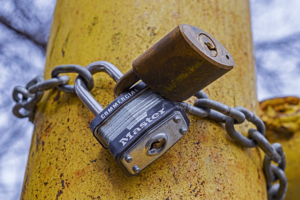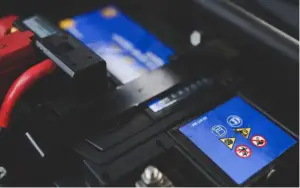An RV water tank that is unclean is an accident waiting to happen. Algae or slime can thrive in your water tank. This can give your water a bad taste, will have an unpleasant smell. At the same time, it is unsafe and may cause illness to you and your family.
You can only leave the water inside the fresh water tank for some time until it will harbor bacteria and will smell.
We clean our fresh water tank at least twice a year. RV fresh water tank treatment is necessary to make sure you are drinking safe water.
Steps in sanitizing the RV water tank
If the water in your freshwater tank has been sitting there for some time, it will have an odd smell, and bacteria will reproduce. The water will begin to taste bad as well.
- What you can do instead is to sanitize your RV fresh water tank using bleach. 1 cup of bleach is good for every 4 gallons of water if the tank is a 40 gallon tank. 1.5 cups of bleach for every 6 gallons for a 60 gallon tank. For a 100 gallon tank you can use 2 cups for every 8 gallons of water.
- Add the bleach mixture to the tank, then fill it all the way up with fresh water. Open all the faucets and let the solution, pour through until you smell the bleach solution.
- After emptying the freshwater tank with the water mixed with bleach, fill the tank again with fresh water. Let the water sit in the tank overnight or for 24 hours.
- Empty the tank after the allotted time. Then you need to fill the tank again with fresh water. Repeat until there is no longer the smell of bleach.
Other options to sanitize the RV tanks
Bleach is safe when used in moderation with just the right amount as it is effective in killing pathogens that bring illness.
Although there are precautions when using bleach in cleaning RV water tanks and pipes, some users may misuse it, which may be harmful in the long run.
If you don’t feel like using bleach to sanitize your RV water tanks, there is also the option of using vinegar or baking soda.
Although this will take a lot of time, some users feel it is safer. It is also a must that these natural solutions be used, in the right way._
- Vinegar is effective for sanitizing and cleaning freshwater tanks. It is safe and can be diluted in water. You just need to leave it to take effect in the tank for some time. Then do the same step with rinsing, emptying it by opening all the taps and faucets to let the water out.
- Rinse with clean water by letting the water run until there is no longer the powerful smell of vinegar in the tank and the water.
- If you are using baking soda for cleaning instead of vinegar, you will follow the same step, such as diluting the baking soda in water.
- Let the solution sit in for a few hours before you empty the tank and rinse it with fresh, clean water.
Is vinegar safe to sanitize the RV water tank
This is a common question that many RVers have apart from looking for option to sanitize the RV tanks. Doing a little bit of research we came across few finding that talk about what can be used to sanitize the surfaces where edible to drinkable are associated. The study by Colorado state university shows results for different sanitizers used like chlorine bleach, hydrogen peroxide, vinegar and baking soda.
The study states that white vinegar is good enough to kill the three types of bacteria E. Coli, Listeria, and Salmonella. But, it has to be heated at 130 degree. So, how do you get it heated? The simple solution is to use your hot water tank. This will not only help kill bacteria but also remove the mineral deposits.
With time mineral deposits start inside water hot tank and its anode rod starts. Clearing it will improve its performance and increase the life span as well.
Why do we sanitize the RV water tanks?
- You need to sanitize your RV water tanks, especially when it is just sitting in your garage or any parking space. The moisture inside the tank can harbor bacteria, mildew, even mold, or algae.
- It should be sanitized from time to time, most especially if you are frequently using your RV for family outings, picnics, and vacation. The freshwater tank is where you get water for drinking, washing dishes, brushing your teeth, and uses it to shower.
- Frequent sanitation is important so that the off taste and the funky smell of drinking water are avoided.
- The water tanks in your RV can get contaminated without you knowing it. We only not worry about the water we get from different faucet most especially when we are out, traveling, but we also have to worry about the bacteria the water contains.
How often to sanitize?
It is always an excellent idea to clean and sanitize your RV water tanks. You can do this twice a year, which is every six months.
If you are frequently out and often using your RV, it would be wise to do the sanitizing once a month or as needed.
We cannot guarantee that we are drinking safe water every time, so we need to be careful and take some precautionary measures.
Get a filter system that can control and remove bacteria. Make sure that you have also double checked the hose that you are using when filling up your tank as dust and dirt can also infiltrate your hose.
Other water tanks to sanitize is the Gray Water Tank and the Black Water Tank. Both hold the dirty water used daily by the occupants. Not sanitizing these two tanks will create a bigger problem for you, such as emission of odor, clogging, among others.
Tips to keep water fresh in an rv water tank
- Use a clean hose for a freshwater tank and have another hose for other tanks.
- It is always the best idea to refill your water tank with fresh water as the need arises, some RV users do it every two weeks.
- Make sure you are sanitizing your water tank as needed and as scheduled.
- Keep your freshwater tank empty when you will not use it for a long time.
- Get water from clean and reliable sources only.
- Make sure you empty your water tanks when the RV is not in use or if you are to put it in storage.
- It is best to have your water tanks checked and maintained from time to time.
- If you are not into using bleach, vinegar, or baking soda, you may opt to buy a cleaning solution available in the market. Manufacturers make solutions that are efficient at cleaning your RV water tanks and effectively sanitize it.
Check all the steps in detail to keep the rv water fresh.
Fresh water options while RV camping
When it comes to fresh water source you have two options. The first is the city water connection and the second is your own RV water tank. One can also get a portable tank with fresh water or store bottled water inside the RV.
We have used bottled water a lot of times specially when we aren’t sure if the city water is good to drink or no. Ideally, you will see the sign that will say the fresh water is safe to drink or not. But, somehow we have been drinking the bottled water to stay safe at all costs.
Water Filter
One important thing to do is to get a filter in between the city water and the RV inlet. This will make sure your RVs entire water system will be safe. The water filter need to be replaced in every six months or so or depends on how it works. In most cases, it will turn brown when it has filtered enough water, that is when you know its time.
Should you really get the filter? Well, i will say yes, definitely. The campground water may be good but not good enough to fully trust. Its always better to have a filter that would remove the chlorine traces and other sediments or minerals deposits.
Drinking the water from tank
As long as you have cleaned the water tanks and treated it with safe to use cleaner then there is no issue in using the tank water for drinking purpose. Having said this, it applies when you own the RV. If you are renting the RV, you may want to be safe and avoid it.
This is because you have no idea what is going on inside the tank there. You will have no idea on the history of the RVs tanks sanitation. A we already saw, it’s imperative to sanitize the RV tank at least once every six months.
What about other things : water pipes, hose, holding tanks, hot water tanks?
There is also lime build up in RV WATER PIPES, and the best way to solve this problem is with the use of vinegar.
Empty the tank first before using vinegar. Another option is with the use of a bleach mixture. Let it sit in for 12 to 24 hours before flushing with clean water. This is the best choice as it removes gunk and lime build up in your RV water pipes.
Water pipes can also get clogged. The only way to prevent this is via maintenance. Checking the pipes from time to time and cleaning it is the best precautionary measure. Checking for kinks is another thing to consider.
RV water tanks should have different hoses for each tank rv water tanks should have different hoses for each tank. Use a clean hose for your freshwater tank, another for your gray water tank, and of course, a separate hose for waste water tank or black water tanks.
The hose for your freshwater should not be contaminated, and you should separate it from your other hoses.
Choose a hose that is specifically made to be safe for drinking water, it should be BPA free and Lead free.
Make sure you have an extra hose with you when you travel, and the hose must have the right length for your convenience. Keep it clean inside and out.
Holding Tanks
The tank system inside your RV consists of 3 main tanks.
First is the gray water holding tank, where the waste water from sinks and shower use wind up.
Second is the black water holding tank where waste water from the toilet and which contains human waste lead to.
The third is the fresh water, which is a separate water tank and is where clean water is preserved and stored.
We already saw how to sanitize the fresh water tanks. Cleaning and maintaining the holding tanks is equally important. In fact, you mess with those tanks and you are in trouble. Accidents with these tanks means a mess that will need lots of efforts.
You better be thorough with the holding tanks. Many people avoid using holding tanks as they do not want to deal with all the stuff. That is wise decision sometimes as you are not comfortable in dealing with all that comes with it.
Cleaning and Maintaining the holding tanks
Each holding tank needs maintenance and separate cleaning. The black water and gray water holding tank need to be dumped and emptied as the sanitation of the whole RV will also depend on it. Not properly cleaning the holding tanks will cause odor to emit in your whole RV.
RV hot water tanks supply the RV with comfortably warm water when you shower and when you need hot water to use. It can be for doing dishes, cooking, brushing your teeth, or for any hygienic purposes.
There are tanks of different sizes for hot water tanks and will depend on how many people the RV can accommodate as well.
Hot Water Tank
Hot water tanks should be drained before you store it after every use especially during the winter. Water left in the tanks, may freeze. Make sure you check the bypass valve after winter. If you are to use your RV again, heating the tank with no water can immensely damage your hot water tanks.
In Conclusion
Going out in your RV with your family can be an exhilarating and joyful experience, the adventure is just endless with having an RV.
The adventure should not include issues with your RV water tank though, so it is always best to keep it in tip top shape with scheduled cleaning and maintenance.
Doing so will keep you stressed free and relax during your entire journey. This may sound so easy to do, but some RVers with their busy schedule forget it. This causes a bigger problem with their RV water tanks in the long run.





